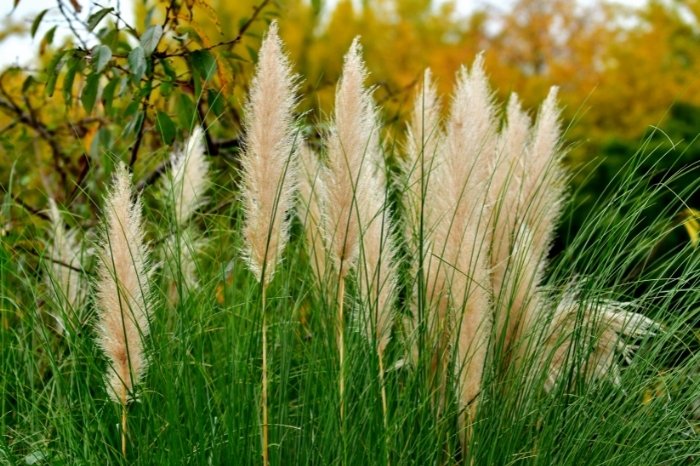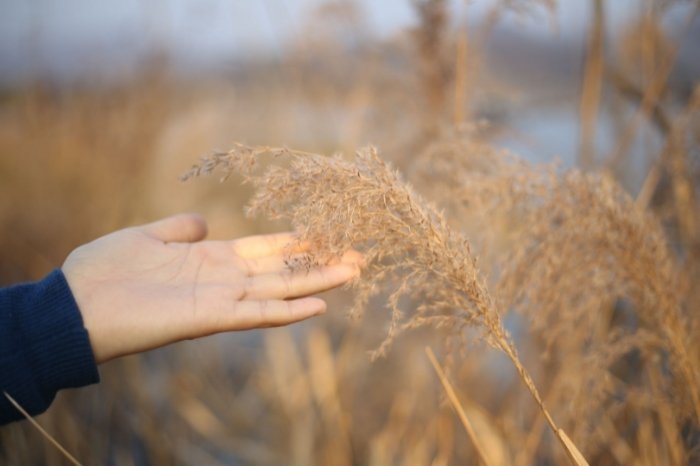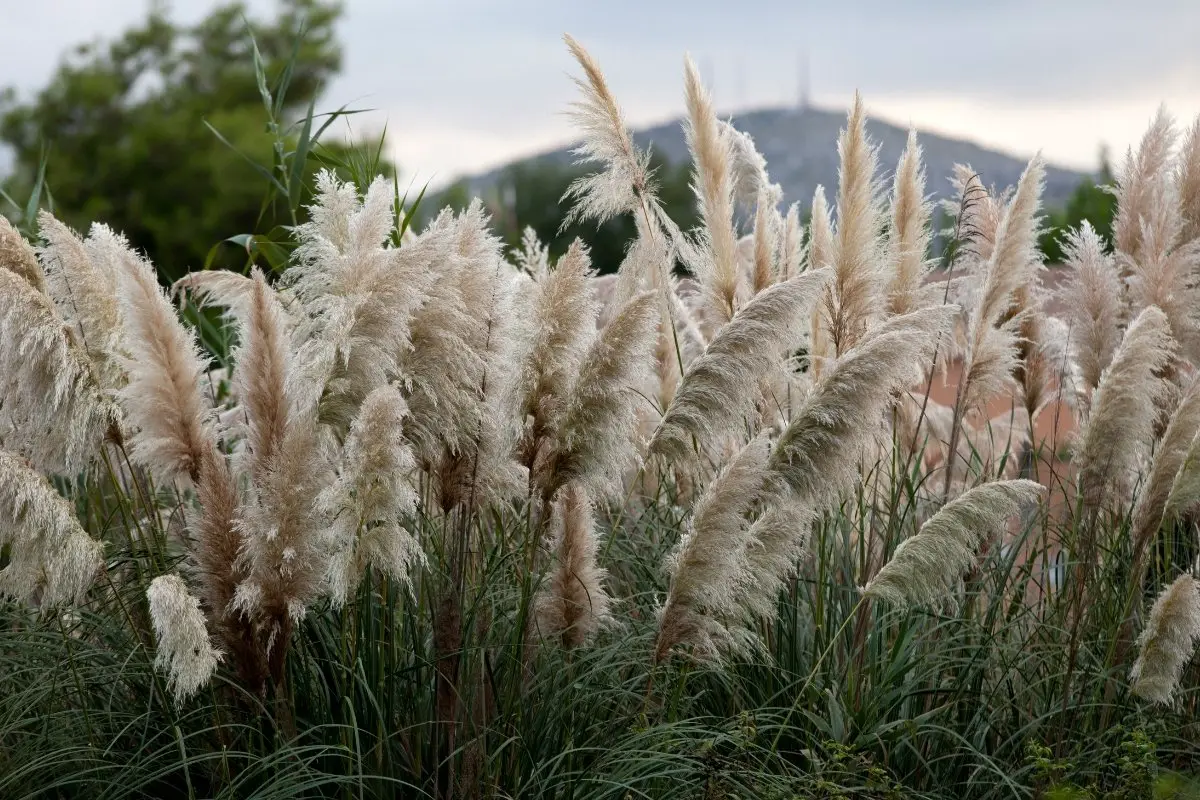Last Updated on January 12, 2022 by Cristina
Is pampas grass a perennial or an annual plant that grows for only 1 year and does not come back unless you plant it afresh?
If you need some beautiful large grass that leaves a big statement in your large landscape, go for pampas grass. This grass stands at a staggering 8 to 12 ft tall and has shown me flowers that open in August, lasting all the way to February.
Pampas grass is a valuable member of the winter landscape plants. It can be used in landscape beds or as a living screen.
In States like Hawaii and California Pampas plant is identified as an invasive plant and not recommended to grow. This plant self-seeds and spreads to form dense, harsh colonies to eliminate. Before planting pampas grass, check the growing regulations within your area.
Is Pampas Grass A Perennial?
Pampas grass is a large perennial grass native to Argentina, Chile, and Brazil. The mature plants can grow up to 10 feet tall and 6 feet wide. This grass is a perennial that will survive winters in USDA hardiness zones 7 to 11. It is also marginally hardy in zone 6.
In the late summer, pampas grass produces silver-white plumes but raises several feet above the foliage, making a bold and dramatic statement in the landscape. Most gardeners grow this grass for this bloom.
Usually, you may have seen this dramatic silver bloom across many Instagram posts a wedding photos due to the love it receives from people worldwide.
Pampas grass thrives in a sunny area receiving at least 6 hours of direct sunlight every day. You will need to space it up to eight feet apart to account for its uncontrolled growth at maturity.
Today pampas grass come in different cultivars, some with pinkish-white plumes while others have a silvery-white color.
Pampas grass has male and female flowers on separate plants. The plumes of female plants are broad and full of silky hairs covering the tiny flowers. They are much heavier than the male plants, which do not have silky hairs on their flowers.
You can propagate pampas grass by dividing a female clamp and planting it afresh. Propagation from seed results in genetic variability and have less attractive male Pampas. There’s no way to know whether you have planted males or females until the grass flowers when grown from seed.
What Type Of Pampas Grass Should You Choose?
The most common group is Cortaderia selloana. This pampas grass originates from America, New Zealand, and New Guinea. There are about 24 species that vary in size and color.
The pumila variety is popular because it is relatively compact, and her striking white plumes appear in late summer and early autumn. This plant grows up to about 2 m tall and has beautiful mid-green foliage.
Sunningdale silver is an architectural plant that needs plenty of room to grow. It has tussocky grey-green leaves with arching stems and densely fluffy whiteheads. It grows up to three meters tall and 2.5 mm wide.
Ecowus Pink Pampas Grass Cortaderia Selloana Rosea Ornamental Flower – 200 Seeds
Silver feather variety is best for tight spaces. It is a small compact plant with variegated green and cream foliage. It has arching stems and silver-white plumes excellent for drying. It grows to about a meter tall, and I m wide.
Where To Grow Pampas Grass
Pampas grass grows and flowers in full sun or at least half a day of direct sunlight. When choosing a location, ensure the area of your choice receives direct sunlight. Once established, pampas grass is low maintenance, deer tolerant, drought-tolerant, and has very few pest problems. It also tolerates salt making it an ideal plant for the coastal regions.
Common pampas grass is hardy in the USDA hardiness zone 8 and is marginal hardy in USDA hardiness zone 6 and 7. Upper Piedmont and mountainous regions of North Georgia consider planting more cold-hardy cultivars.
Pruning
It is essential to prune your pampas grass annually to remove the previous year’s foliage and make way for new growth. Because pampas grass is perennial, it will keep growing even during winter.
It is best to prune your grass during late winter before the new growing season begins again. Use sharp hedge shears or lopping shears, or power pruners to cut back the grass as close to the ground level as possible. Wear protective clothing like a long-sleeve shirt and gloves when pruning to protect yourself from the sharp leaf blades.
After pruning, apply a light broadcast application of a complete fertilizer like the 10-10-10 or 8-8-8 to help stimulate new growth.

Problems With Pampas Grass
Pampas grass is resistant to most diseases and tolerant even in the driest growing conditions. It presents few problems other than its tendency to self-seed and spread where it is unwanted.
If your plant grows too large, you can try dividing it in early spring to reduce it. In hot countries where wildfires are a risk, it is recommended that this highly flammable plant be grown away from homes and buildings to reduce fire hazards.
Harvesting The Plumes
Pampas grass plumes are highly prized for floral and arrangements. Harvest these flowers as soon as they have fully emerged before they mature and begin shedding. You can use them in arrangements immediately after harvesting or dry them for later use.
How To Dry Pampas Grass
To dry your pampas grass plums, here are steps to follow
- Cut the stems when the plant is in full bloom, especially late August to mid-September. Harvest your stems during a dry day afternoon when the dew has wholly tried.
- Tie a bunch of 3 to 4 stems together with a string and leave a loop for hanging.
- Choose a warm, dry place and hang the bunch upside down, showing that the air can circulate all around it easily.
- Leave your stems for two to three weeks to dry.
- Once your plumes are dry, turn the grass the right way up, fluffing them out gently with your fingers, and apply a small amount of hairspray before displaying them in a rustic vase or a vintage glass.

Final Thoughts
Pampas grass plumes are more common because this plant is a perennial, and it produces them every year. Plant this grass cascades gracefully over a slight slope or a short rock edge. Combine it with other shade-loving plants such as ferns or hostas or grow it as an accent by itself.
Caroline is a gardener who loves to get down to the nitty–gritty of gardening. She proudly proclaims herself as a ‘dirt worshipper‘ and can often be found deep in the garden, covered in soil and singing to her plants. As a self–proclaimed ‘plant whisperer‘, Caroline believes that plants need love and attention just like any other living thing, and she loves to give them both. When she‘s not tending to her garden, you can often find her researching the latest gardening trends, or teaching others how to make their gardens thrive



